Celebrating people and nature with Yataya
Written by Paula Gomez Villalba, Communications Coordinator | October 16, 2024
Yataya stepped into her role as our Conservation Intern with a unique background having grown up in Whitehorse and living in Europe for many years, at one point even studying art there. During the summer, Yataya spent months drawing and interviewing people from Kwanlin Dün First Nation and the Ta’an Kwäch’än Council for her project. Today, you can see her exhibit, People of Chasàn Chùa, at the Kwanlin Dün Cultural Centre. This art exhibit is free to view in the foyer of the KDCC, and will be on until late October.
Having Yataya as part of our team was such a pleasure. We’ve been really grateful for how interns have infused our organization with creativity and art—from Ainslie’s colouring book in 2022 to Aiden’s wood carving project in 2023, and now Yataya’s project! At the tail end of her internship, I had the opportunity to chat with Yataya about her process and journey.
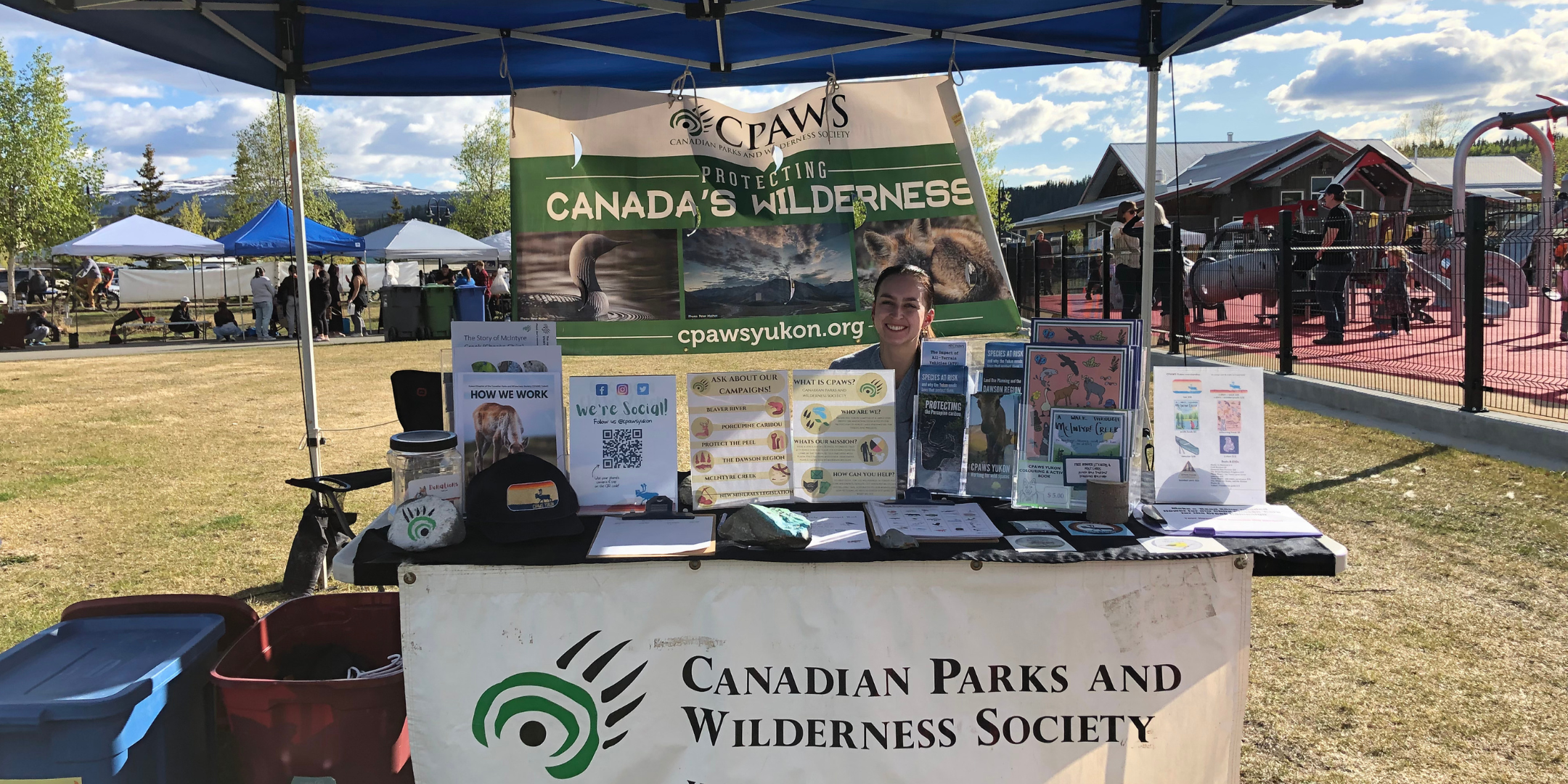
Yataya at the CPAWS Yukon booth at the Fireweed Market, a great place for chats about conservation and community. Photo by Anne Mease.
From the beginning, our work to highlight and protect Chasàn Chùa (McIntyre Creek) stood out to Yataya, in particular the focus on collaboration with local First Nations. However, her connection with the actual area was a bit mixed!
“Even if you’re born and raised in Whitehorse… you don’t know which areas are McIntyre Creek because it’s so spread out. Geographically I didn’t know what was the whole area of McIntyre Creek. Especially within the city, to go from one place to another, it’s quite a lot of driving. It can be confusing,” she shared, highlighting the complexities of navigating the area.
Yet, this confusion underscores the Chasàn Chùa’s importance as a wildlife corridor. The creek is accessible from the McIntyre Subdivision, Whistlebend, and near Yukon University, connecting forests and water for local species and creating nearby spaces for people to connect with the land.
Yataya embraced this while participating in events like our Life of the Boreal guided walk and the collaborative Care for the Creek Community Cleanup we organized this year. In chatting with Yataya, the importance of people in conservation came up again and again. “First Nations people have been here for thousands of years, they know this area and have stories about it. Their knowledge can also be appreciated, just like scientific knowledge,” she shared. For Chasàn Chùa, it’s not just the government that’s making this into a park, there’s a lot of people pushing for those protections.
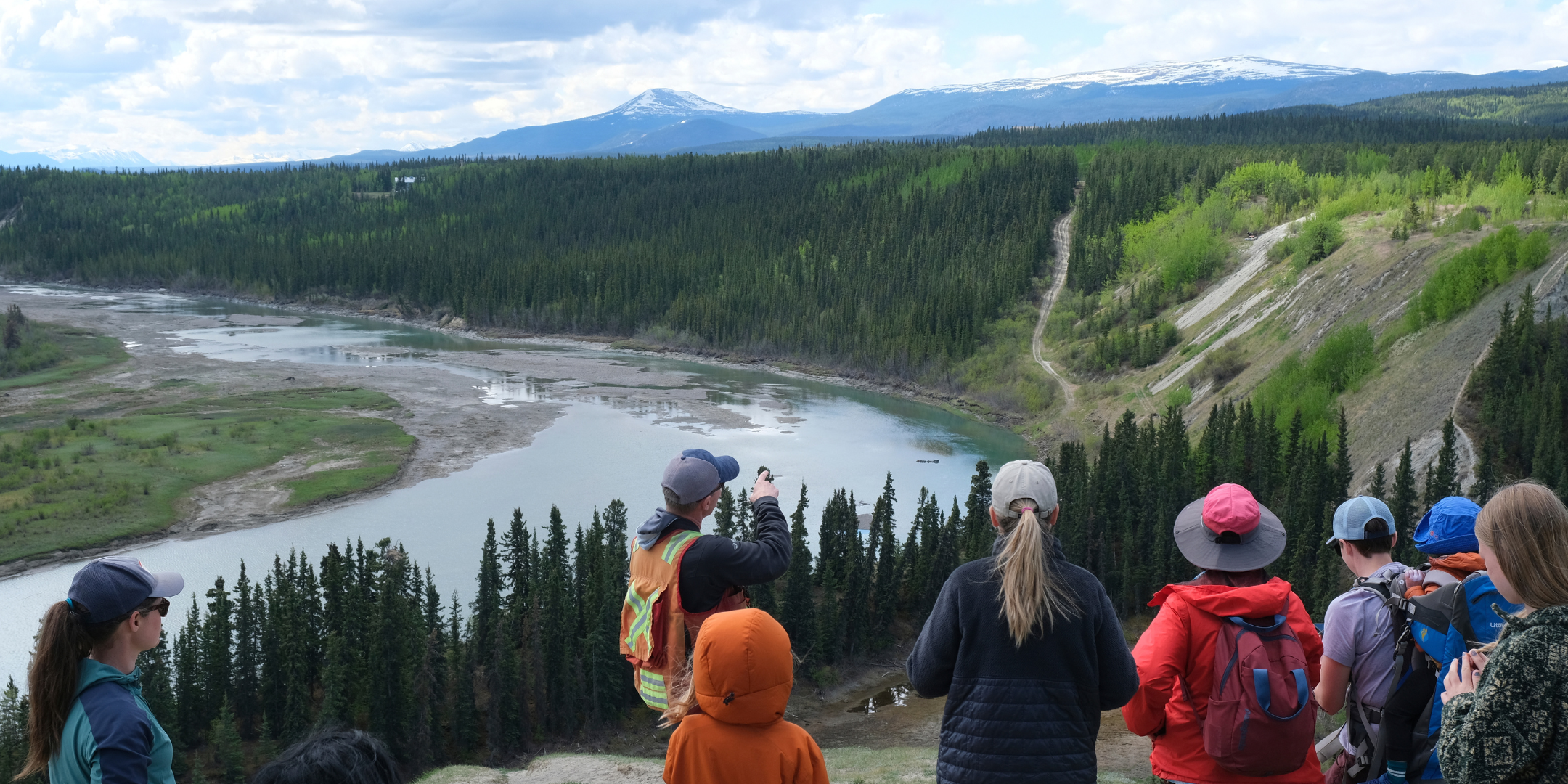
Care for the Creek community events were hosted by CPAWS Yukon and the Yukon Fish and Wildlife Management Board, in partnership with Ta’an Kwäch’än Council and Kwanlin Dün First Nation, to connect with nature and restore Dàmäwtän (The Point). Photo by Adil Darvesh.
To celebrate these people, Yataya created watercolour portraits. She was first introduced to this type of painting in a high school course, and continued to develop her skills through self-learning. “Watercolour is a simpler medium that you can experiment with,” she explained, appreciating the flexibility it offers compared to drawing with pencil and graphite.
“I find landscapes and animals boring,” Yataya admitted with a bit of hesitation. “My school focused on learning a lot about human anatomy to draw people. You can mess up pretty bad, and it can still look like a mountain. There’s too much flexibility there. People know people. They can catch on much faster when a portrait isn’t quite right, or an eye is just a bit higher than it should be.”
Her approach to creating the portraits involved a careful process of measurement and adjustment. “First, it’s about finding a clear photo. Once I find a clear photo, I do measurements. I measure the area that I want the portrait in, and then measure where half is, where a quarter is,” she explained. What comes next is an unexpected tool: a knitting needle! “You can use it to find angles – like if someone’s ear is at the angle of their shoulder in a specific way – you can step back, hold the needle firmly, and go back and forth to see if it’s the right angle.”
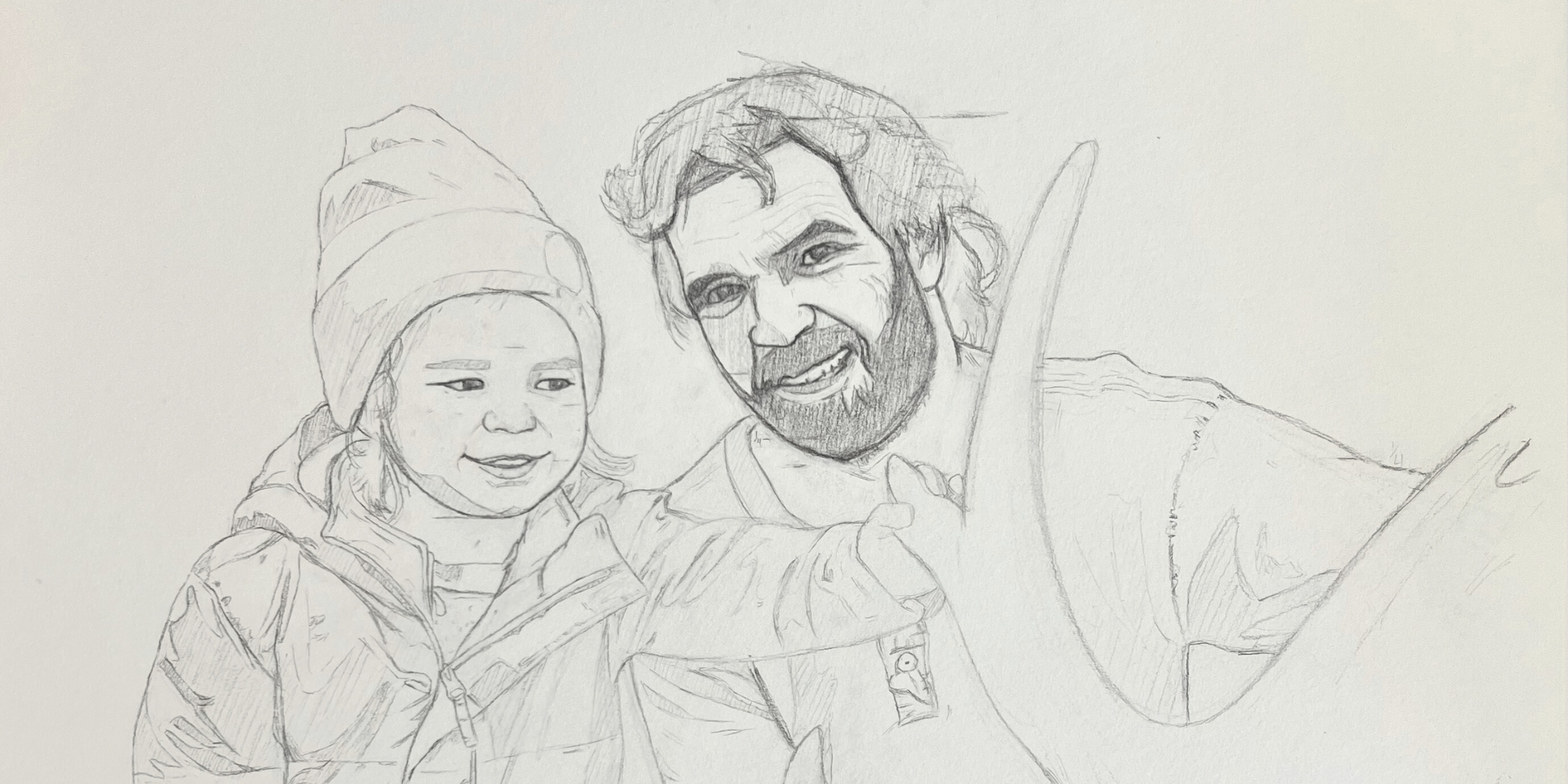
Final sketching stage for Troy Friday and his son, Elliott Friday’s portrait (cropped). Photo by Yataya van Kampen.
Between measuring and sketching, Yataya emphasized the importance of taking breaks to step back and assess the work as a whole. “If it doesn’t look right, I just take the time to redraw,” she said, showing her commitment to honouring the individuals she painted. For instance, after hearing the stories of Troy Friday and Gary Bailie, she felt compelled to capture their likenesses next to family members. “It only felt right to do a portrait of both of them after hearing their stories of being connected to the land with their family.”
After days of sketching, Yataya shared that she adds colour working around the portrait in a circular pattern, working in layers and often leaving the background for last. “For larger portraits with one person, I really like doing flowers all around. They’re based on beading designs, some simple ones that I have used myself, but also some beading designs I have seen in the past. It’s a mix.”
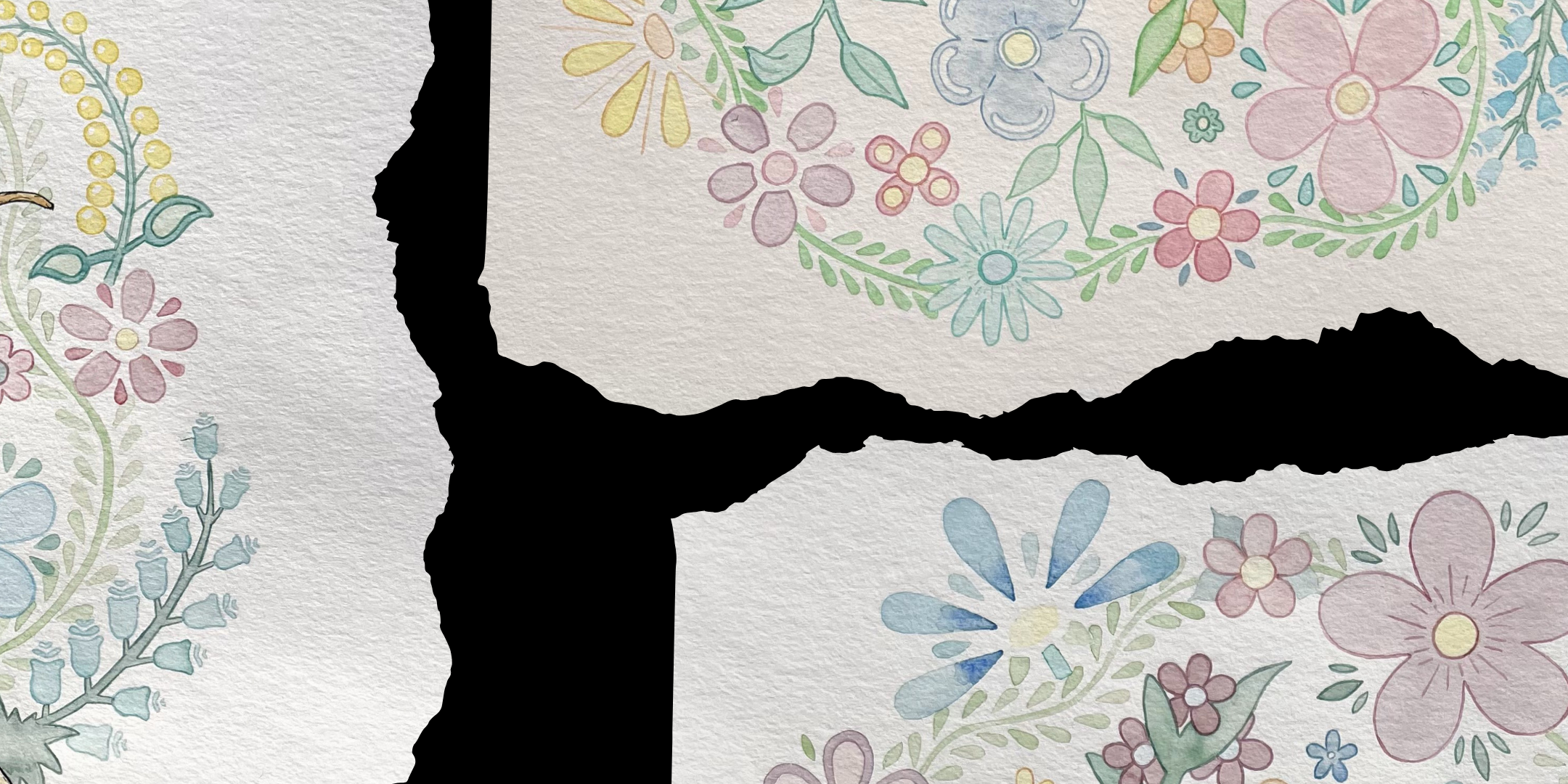
Close-ups of flowers features in the portraits. Art by Yataya van Kampen.
Beading has been a part of Yataya’s life since she was 16, and it remains an important activity for her, especially while living abroad. “Beading reminds me of home because I’ve been gone so long. The only thing I can really do is what I can take with me. When I’m gone, I don’t see one single First Nations person for months on end. I’m really disconnected from where I’m from, and so that’s the one thing that keeps me connected.”
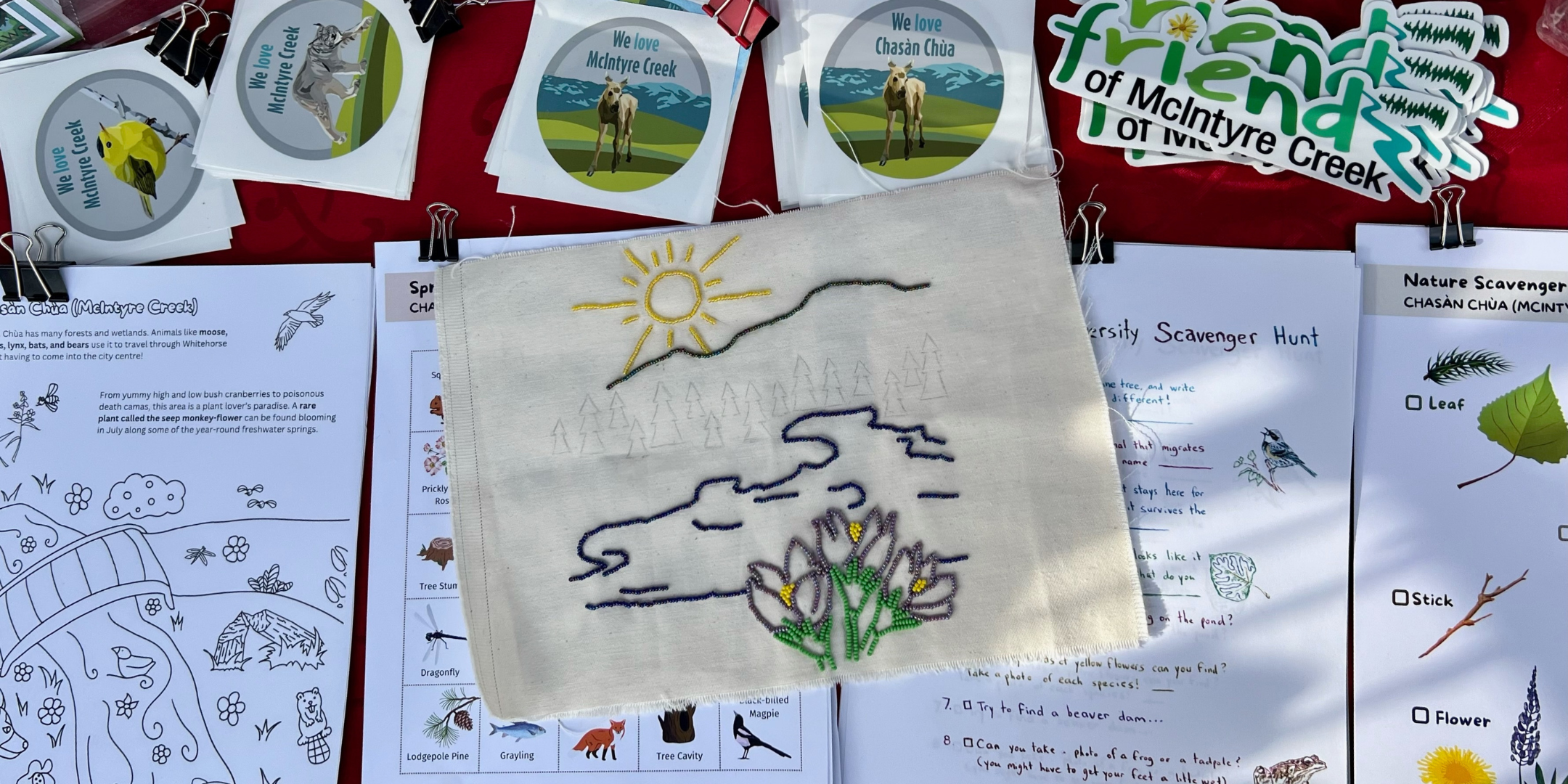
Community beading project at our booth at the Fireweed Market this year. Photo by Yataya van Kampen.
Reflecting on the different types of connections, Yataya’s project grew as the summer went on, beyond the art itself. To highlight community, Yataya interviewed subjects and reached out to the KDCC to share the stories with others. Like any project, there was a lot of learning involved as she learned about consent forms, the importance of wording, writing for the public, and more. Yataya had previously worked with Yukon’s Victims Services on an accessibility project conducting informal interviews, and later, transcribing conversations in a research role focused on immigrants in Canada. Both of these experiences helped inform her work. Through the interviews with those she painted, Yataya found comfort in familial ties and shared histories. “I had connections through family with many of them. Either I found out I was cousins with them or they know my family line,” she noted.
By blending her artistic background with culture, Yataya not only created art, but also bridged communities, shared stories, and honoured the land and its people. We highly recommend everyone check out the art exhibit!
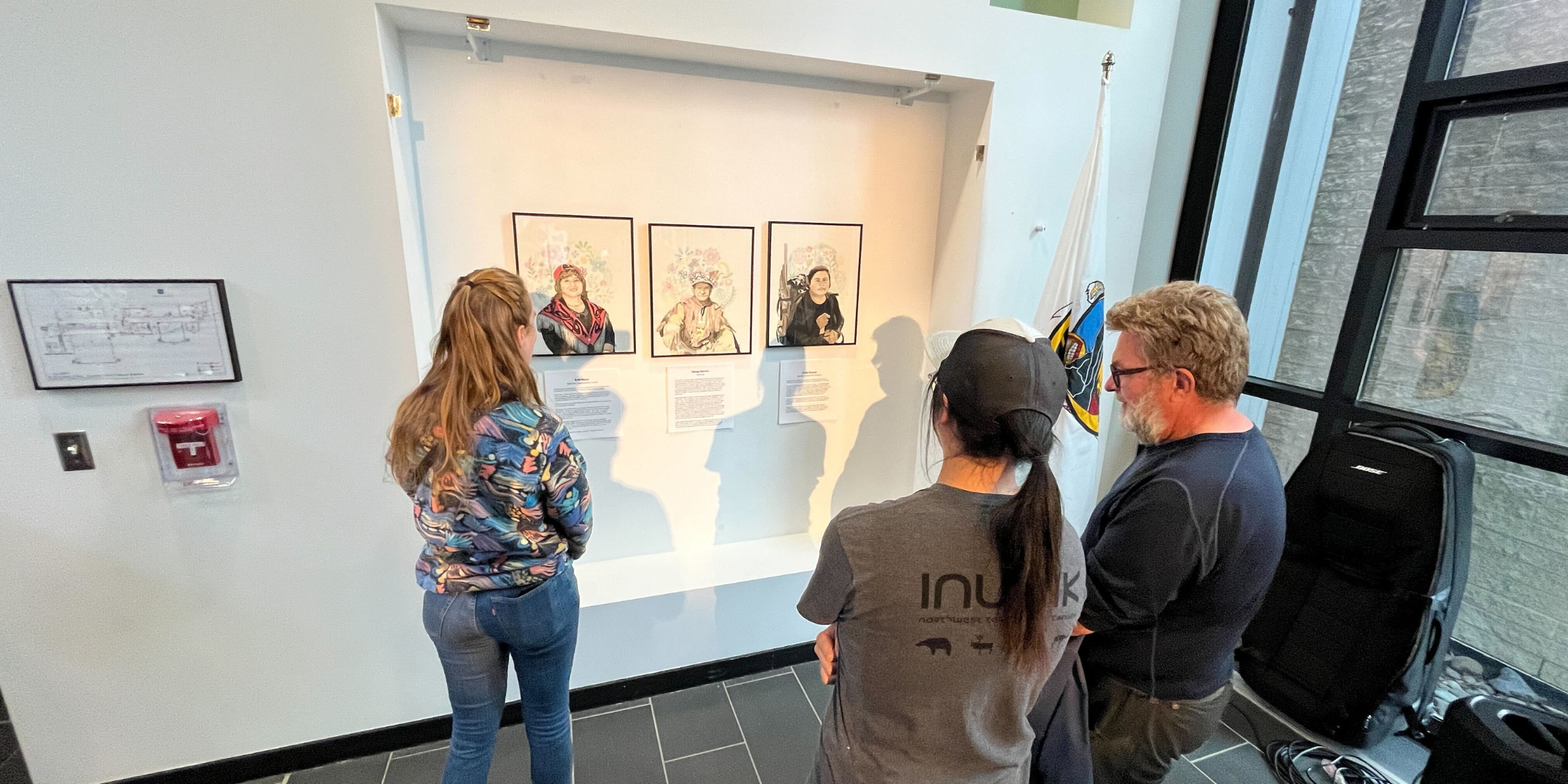
People of Chasàn Chùa art exhibit at the Kwanlin Dün Cultural Centre. Photo by Adil Darvesh.
So what’s next for Yataya? Yataya’s been working on more portraits after being commissioned by Yukon University. She hopes to continue to focus her art on people. This winter she’ll be going to a mystery country in keeping with the rhythms of her life.
